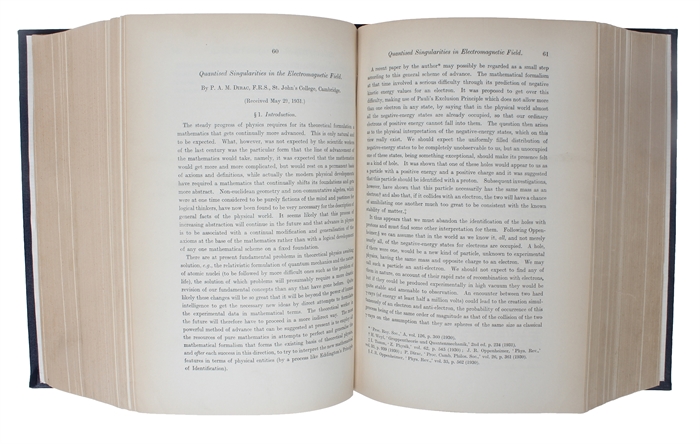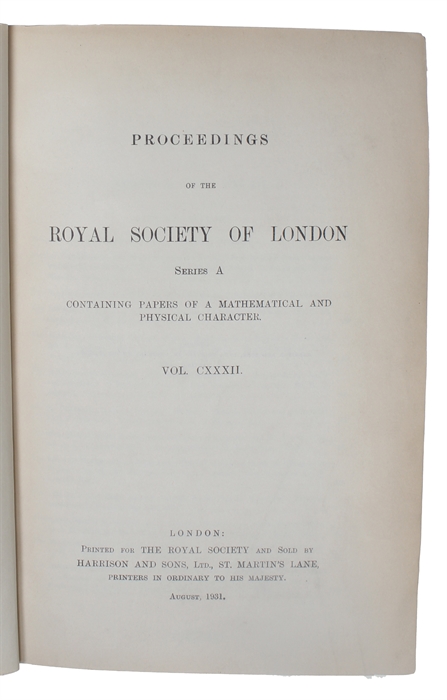PREDICTION OF ANTI-MATTER
DIRAC, P. A. M.
Quantized Singularities in the Electromagnetic Field.
London, Harrison and Sons, 1931. Royal8vo. Bound in contemporary full blue cloth with gilt lettering to spine. In "Proceedings of the Royal Society", Series A, Vol. 132 & 133, 1933. A very fine and clean copy. [Dirac in Vol 133:] Pp. 61-72. [Entire volume: V(1), 703-706, 701, (1), XIV, 695, IX pp.]
First printing of Dirac's seminal paper in which he predict anti-matter. "The prediction and subsequent discovery of the positron rank among the great triumphs of modern physics". (Pais, The Genius of Science).
After Dirac in 1928 had published his famous relativistic wave equation for the electron, he spent the following years working on an interpretation of the negative energy solutions of the equation. In 1930 he published his hole-theory and tried to identify the holes with protons. But, as pointed out by several others, the theory required that these counter particles to the electron must have the same mass as the electron, and also would annihilate into pure energy upon colliding with the electron. In 1931 (in this article) Dirac bit the bullet and postulated: "A hole, if there is one, would be a new kind of particle, unknown to experimental physics ... We may call such a particle an anti-electron ... Theory at present is quite unable to suggest a reason why there should be any differences between electron and protons". Thus, Dirac had predicted the existance of both the positron and antiproton.
"Dirac was one of the greatest theoretical physicists in the twentieth century. He is best known for his important and elegant contributions to the formulation of quantum mechanics; for his quantum theory of the emission and absorption of radiation, which inaugurated quantum electrodynamics; for his relativistic equation of the electron; for his "prediction" of the positron and of antimatter; and for his "large number hypothesis" in cosmology. Not only his results but also his methods influenced the way much of theoretical physics is done today, extending or improving the mathematical formalism before looking for its systematic interpretation." (DSB).
In 1932 C. D. Anderson produced positrons in cloud chambers exposed to radiation. Antiprotons were observed in 1954 by E. G. Segrè and O. Chanberlain.
Order-nr.: 46940



